As we move through 2021, the effects of the last year can be felt across all industries. However, despite some major disruptions due to the ongoing COVID-19 pandemic, the global wind industry still managed to achieve a record year. According to the Global Wind Energy Council, 2020 saw a 53% year-on-year increase of new capacity installed, with no hint of slowing down. Thanks to the clean energy output and smaller footprint, wind farms are a growing business.
With more wind turbines being built globally, the need to keep these assets operating safely and as efficiently as possible is increasing. By ensuring the turbines are operated and maintained consistently, the initial investment can be preserved, unscheduled stoppages and downtime can be avoided, and the environmental impact of replacing the turbines sooner can be reduced.
Unpredictable environments
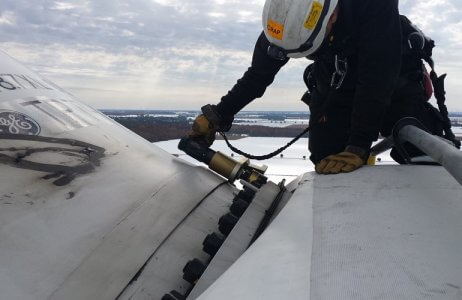 Working on a wind farm is unlike any other environment. A wind turbine is constantly exposed to the elements and experiences all types of weather — heat, cold, rain and, of course, wind. Dirt can build up and cause issues for both the turbine and those tasked with operating and maintaining it.
Working on a wind farm is unlike any other environment. A wind turbine is constantly exposed to the elements and experiences all types of weather — heat, cold, rain and, of course, wind. Dirt can build up and cause issues for both the turbine and those tasked with operating and maintaining it.
Not surprisingly, one of the most significant challenges faced by managing a wind farm is the height — everything needs to be carried up several flights, and the weight of tools and required components can play a big factor into maintenance.
Added to these challenges is that the need to work in the landscape that is often susceptible to unpredictable weather patterns. Operations crews are always working within a tight, compact schedule to accomplish their required maintenance tasks. Some days can be too windy to have cranes working to lift materials, so the job is shut down. When the window occurs and the weather calms, it’s important that crews can efficiently tackle as much as they can within a short time frame.
Ongoing maintenance
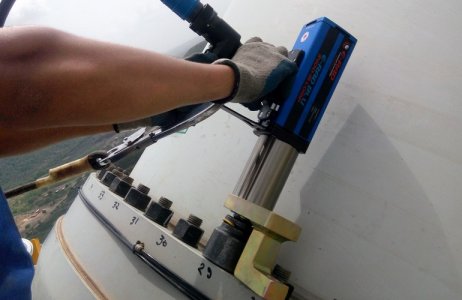 Wind turbines generally require preventative maintenance checkups a few times a year that must be performed by specialized technicians. With more than 25,000 bolts on an average wind turbine, one of the most important routine maintenance activities is to perform a torque check on the bolts used on all parts of the turbine. Torque is an indirect indicator of fastener tension and bolted-joint clamp load. Bolts are checked on the towers, in the cell, the generator, and the power generator. Even the blades are bolted on, so it’s important they are checked regularly.
Wind turbines generally require preventative maintenance checkups a few times a year that must be performed by specialized technicians. With more than 25,000 bolts on an average wind turbine, one of the most important routine maintenance activities is to perform a torque check on the bolts used on all parts of the turbine. Torque is an indirect indicator of fastener tension and bolted-joint clamp load. Bolts are checked on the towers, in the cell, the generator, and the power generator. Even the blades are bolted on, so it’s important they are checked regularly.
It’s essential that the bolts carry a precise bolt load and are within the variation specified by the original equipment manufacturer. When bolts are checked, it’s to ensure they are tight — but not too tight. If they are too loose, malfunctions or even catastrophic disasters can occur. If they are too tight, they can be stretched to the point where they can no longer carry a clamp load and will need to be replaced. With so many bolts, the extreme environments, and the height of the wind turbine, this is a job that needs to be done efficiently while meeting exacting standards.
Right tools for the job
Given the demands of the specific requirements of the wind industry, it’s important that the right tools are used for the job.
Precision torque wrench tools, like the E-RAD BLU series from RAD Torque Systems, are the choice of wind turbine manufacturers, wind power construction and maintenance contractors, as well as utilities around the world for their heavy-duty bolting requirements.
“The wind industry overall and the maintenance and operation of wind farms can be a pretty rough environment,” said Kevin Campbell, Master Distributor of the RAD Torque Product Line in the Western US, with Dynamic Bolting. “Working in that climate so high off the ground can be very demanding and there can be strict requirements for the tools needed to get the job done.
“The E-RAD BLU series precision torque wrench tools are accurate, compact and fast,” Campbell continued. “And most importantly, they’re lightweight — precisely what’s needed for this tough environment.”
Unique tools for a unique workplace
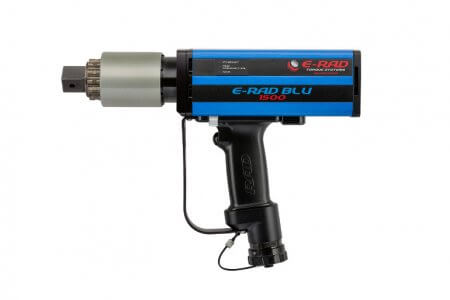 After more than two decades of building extreme duty torque wrenches for heavy duty applications, RAD Torque Systems understands the unique challenges of the wind energy industry. Used by companies like General Electric, Vestas, Siemens, Goldwind and Iberdrola, RAD tools have been relied on to build and maintain wind power facilities around the world. These years of experience have allowed RAD to design specific tools to make technician jobs easier while ensuring they meet the exacting maintenance requirements.
After more than two decades of building extreme duty torque wrenches for heavy duty applications, RAD Torque Systems understands the unique challenges of the wind energy industry. Used by companies like General Electric, Vestas, Siemens, Goldwind and Iberdrola, RAD tools have been relied on to build and maintain wind power facilities around the world. These years of experience have allowed RAD to design specific tools to make technician jobs easier while ensuring they meet the exacting maintenance requirements.
Durable, high-speed and lightweight, the E-RAD BLU saves labor time, lowers project downtime and maintains wind towers faster, all while handling the 5,000 ft-lbs. and even up to 10,000 ft-lbs. needed for tower bolts. Torque ranges for the E-RAD BLU are 100 to 11,000 ft-lbs. (135 to 15,000 Nm), far exceeding what’s needed for regular maintenance.
Providing a high degree of accuracy (+/- 3% on target) for high torque assembly applications, the E-RAD torque wrench has a patented and advanced electronic pistol grip to reduce bolting time up to 300% as compared to conventional hydraulic wrenches.
The E-RAD uses advanced technology to ensure a high degree of accuracy and data collection. Allowing multiple models of wrenches to be used in combination with one controller, the E-RAD has Bluetooth connectivity with RAD Smart Socket for transducer verified joint calibration, highly advanced data logging and tool management features, and a military grade single cable and connector system.
In some wind turbine towers, technicians have to flange sections from the inside. Other turbines have unique curvatures that do not allow for the use of straight tools. RAD’s offset gearboxes and 90° tools allow an E-RAD to fit inside the diameter and curvature of a turbine’s shell, which means no job is out of reach — even on more challenging turbine designs.
The E-RAD is extremely light in comparison to its hydraulic competitor and does not require a heavy pump. That means it’s easier to transport up to and use on work platforms. But that doesn’t mean it compromises on torque strength.
It can take up to 120 bolts and up to 11,000 ft-lbs. to connect a large diameter flange. The E-RAD is a continuous rotation tool and can complete a task like this in a much shorter time than a hydraulic wrench.
Safety first
The most important consideration when performing any kind of maintenance work is safety. While there are instances where access can be an issue, technicians can fall back to a hydraulic wrench. But in all other applications, the E-RAD clearly outshines.
“When using a hydraulic wrench, you need two people communicating: tool handler and pump operator,” Campbell said. “You need to rely on that communication which can be difficult and is prone to human error. And there can be other issues, like the weight of the pump while you’re trying to bring it up the turbine, the potential to spill fluid, which can cause a slipping hazard… these are all problems the E-RAD solves.
“Every opportunity that it’s possible to fit a RAD style tool into an application, it’s the tool of choice,” Campbell continued. “The first time a technician picks up an E-RAD, they are impressed. It’s quiet, it’s accurate. The tool provides the confirmation of the work performed and the accuracy of the work performed. Hands down, it’s just the best torquing device I’ve ever worked with.”
As a leading Canadian manufacturer of pneumatic, battery powered and electronic pistol grip torque wrenches, RAD Torque proprietary precision tools are successfully used in the oil and gas, wind energy, petrochemical, mining, aerospace and manufacturing industries around the world. RAD continues to innovate and achieve the highest level of quality and performance and operations are designed for maximum flexibility and responsiveness, ensuring every customer receives outstanding service.
Filed Under: Bolts and bolting, Featured

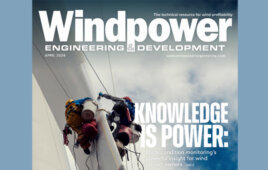

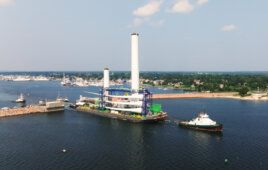

great…. can be used for high school graders carpentry lessons.. very clear and simple